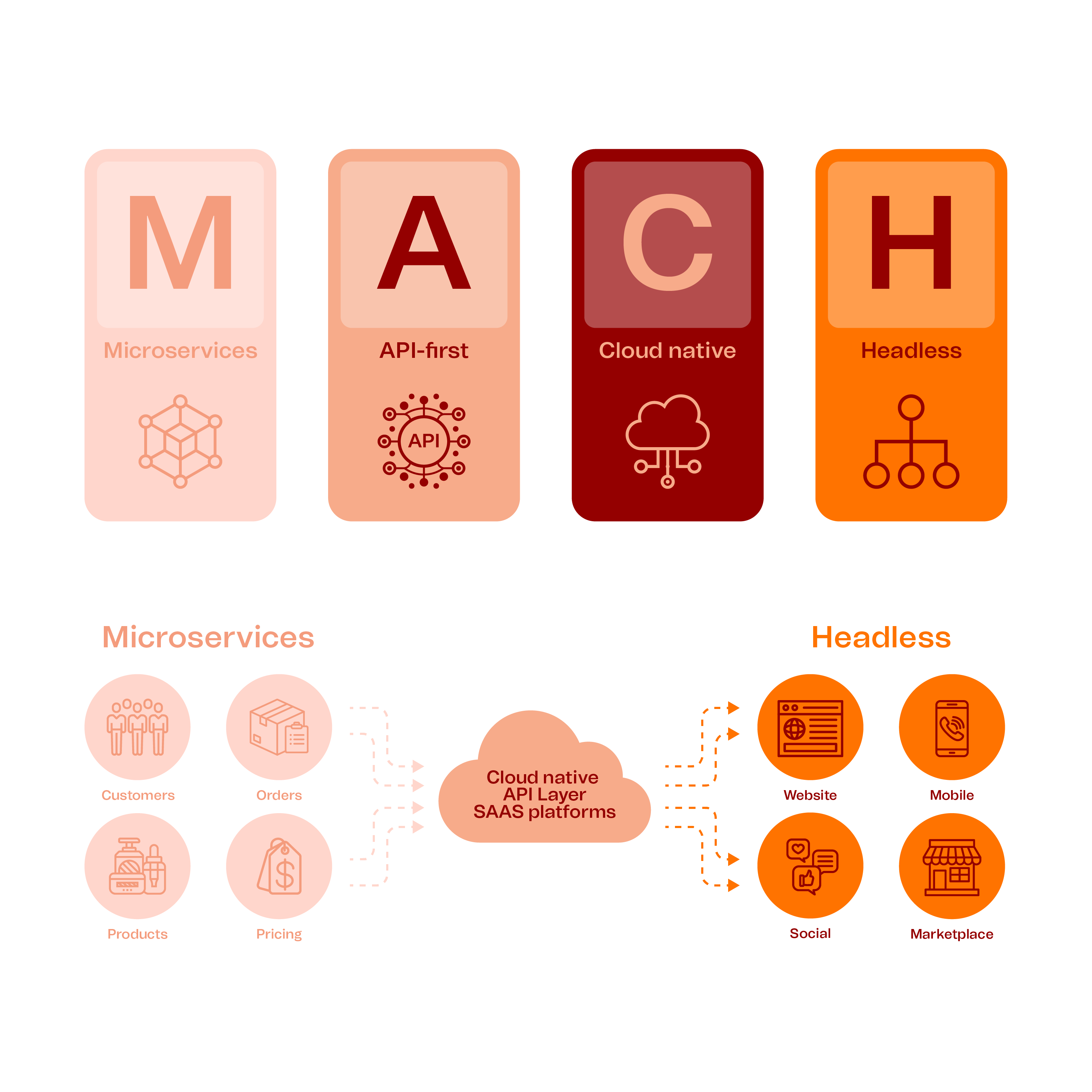With years of experience and a myriad of successful projects, we have proven our expertise in B2B commerce. We have assisted many companies, big and small, in their digital transition, providing strategic insights and building bespoke B2B commerce platforms.

B2B Commerce
By digitalizing your wholesale process, you make the buying process for customers more pleasant and you benefit internally by automating tedious tasks.

What is B2B e-commerce?
B2B e-commerce is the use of electronic channels and portals for business-to-business commercial transactions – in other words, it enables the online ordering and processing of goods between retailers, distributors, manufacturers, and wholesalers.
Our B2B commerce expertise

Why go for B2B Commerce?
Are you selling products and services directly to other businesses and have you been asking your customers to order by filing out a form, calling you up, or writing an email? Then it might be time to think of modernizing your wholesale process.
Making the move to a B2B e-commerce portal allows you to manage everything in one place, from customer data to inventory control to order fulfilment. This way, you give your customers the power to serve themselves, allowing your branded presence to go from only business hours to 24/7.
Next to the advantages for the customer, a B2B commerce platform also benefits the way of working within your company. Since you create higher growth prospects, your sales department will be able to work more efficiently. Also, finance will reap the benefits through a lower overhead cost due to the reduced infrastructure.
Historically, B2B companies have been rather reserved when it comes to e-commerce. However, with the pandemic acting as a catalyst for change and an increasing number of millennials entering the B2B world, buyer expectations are rising faster than ever.
That means that B2B customers expect the same convenient and relevant buyer experience than we see with B2C sellers these days.
By digitalizing your wholesale process, you not only benefit internally by automating tedious tasks, but you also make the buying process for customers more pleasant.

The MACH approach for B2B commerce
A B2B commerce track starts with a discovery phase. In this phase we learn how your business is working today and map out the commercial and technical needs of the solution. We strongly believe in choosing the right tools for the right purpose. Using one tool or platform (or “suite”) for a large number of mixed requirements, will always end up in a so called “monolith", which is something we try to avoid at all costs.
The core idea here is that you build your B2B commerce solution with several parts, best of breed from all their respective niches - whether that is CMS, eCommerce, analytics, front-end framework, CRM, or marketing automation. Our preferred MACH approach fits this idea perfectly.
- Microservices-based: this means that individual components of business functionality are independently developed, deployed, and managed. These components communicate and exchange data while remaining their separate ‘nature’.
- API-first: by using APIs (Application Programming Interfaces), we can tie two or more applications or services together and send only necessary data from one system to another.
- Cloud-Native SaaS: simply put, cloud-native SaaS is software that is built and developed for speed and scaled and licensed via a subscription model.
- Headless: with a headless architecture we separate the front-end and back-end of the system to be able to create personalized UX experiences.

Why your B2B e-commerce solution should be composable
If your strategy revolves around growing your brand and staying relevant for your digital consumers, consider these five benefits for embracing a composable architecture.
1. Customization: When using a headless solution, you are not tied to monolithic software that prescribes how a front-end should be structured. This freedom means you have full control over what happens on the front-end and can follow your UX design principles to shape your brand’s identity.
2. Freedom to experiment: In a headless environment, you can conduct user experience (UX) experiments without the risk of jeopardizing the whole ecosystem. You can A/B test specific parts of your website, or try to build an Alexa skill, without affecting the back-end operations if you run into errors.
3. Speed and agility: You can implement new UX changes faster since you don’t have to redeploy a back-end system when working in a decoupled environment. Development becomes much more efficient when teams can work in parallel and UX changes can be made without having to test all the core back-end logic.
4. Scaling: In a best-of-breed environment, the front-end and back-end can be scaled independently so that even if the front-end receives a lot of traffic, the commerce functions are not impacted.
5. Easily add new touchpoints: In a headless scenario, multiple front-ends can connect to one API and underlying system. In other words, if you want to add social channels, kiosks, mobile apps, or in-car marketplace shopping, you can do so easily and quickly.
Is your interest triggered? Let's connect!
Did you like what you read? Are you eager to find out how we can help you further? Feel free to reach out, we would love to have a chat.
Other related services
-
UX/UI
Our experience shows that understanding what drives your customers is essential to creating better digital products and services. That is why we love to take a deep dive into your target audience, understand what drives them, and tailor solutions exactly to their needs. This process requires co-c...
-
Brand & Concept
Good branding is way more than a consistent use of brand colors, a recognizable typography, and a professional-looking logo. Good branding captures the essence of your brand. It builds trust with your customers and makes your employees feel proud. Now more than ever, consistent branding on every ...
-
Content
Just like we love getting to know you, we love getting to know your audience. We need to understand what keeps them busy and map which channels they frequent. This allows us to help you create and share the content that makes them engage with your brand. We target it to specific personas in the r...
-
Architecture
We are fully aware technology is just a means to an end. That’s why we firmly believe in technologies that assist you, rather than dictate how you should run your business. We prefer to stay open-minded and act platform agnostic. Some businesses will thrive with a technology architecture based ar...
-
Marketing Technology
By using the right marketing technology, businesses can improve marketing strategies, increase customer engagement & drive better results. However, with so many marketing technologies out there, It can be difficult and time-consuming to know which ones to choose. We can help with selecting an...






